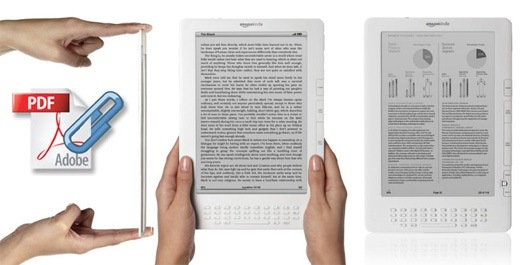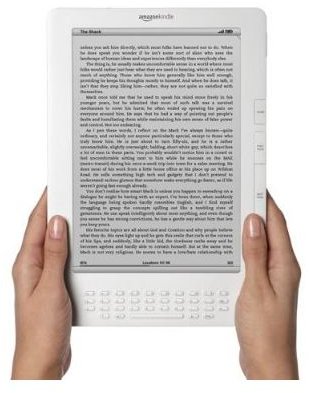

#AMAZON KINDLE DX 3RD GENERATION FREE#
Should you get the low-end Wi-Fi version for $139 or the one with free 3G mobile connectivity for fifty bucks more? I didn't get a chance to test the low-end Kindle, but after using the Wi-Fi on the deluxe version, I found it simple to access and use my password-protected network.
#AMAZON KINDLE DX 3RD GENERATION PDF#
And the basic Kindle finally has the native PDF support of its bigger brother, the Kindle DX.

There's twice as much on board storage from the previous gen Kindle, enough for 3500 books. (The low-end version claims 3 weeks with the Wi-Fi on.) But even if the specs come close, that seems like a nice boost to those who want to travel without worrying about keeping their charger close. Since I only had my new Kindle for less than a week, I couldn't test Amazon's claim that the battery would last ten days with the 3G on, and a month with the radio shut off. Maybe the fourth generation will be the charm. Unfortunately, Amazon still hasn't gotten it exactly right-the "up" and "down" movements on the 5-way button are too close to the "menu" and "back" buttons and if you're not careful, you can easily hit them by mistake. For the first time, you can grab a Kindle without worrying about accidentally pressing a button that loses your place. Also, the "menu" and "home" buttons have been moved from the side panels to the keyboard, leaving just slim page-forward and page-back buttons on both sides of the unit. This Kindle discards the stubby joystick for a "five way" display that's a select button surrounded by directional keys to help with cursor movements. Speaking of navigation, each generation of Kindle has discarded the previous interface hardware for selecting and getting around your reading material. (When it comes to reading publications with more complicated layouts, like newspapers or magazines, though, touch-screen, backlit tablet computers still have the edge.)

The one feature I do miss-and actually exists on the iPad Kindle app-is a slider that allows you quickly "thumb" through the pages of text to an approximate area you want to find.

After hours of Kindle use, I have come to hardly notice that blackout anyway (though many novices are bugged by it). The other reading improvement that Amazon boasts about-a 20 percent reduction in the brief blackout that occurs when you turn the virtual page of an e-book-is less significant. The new Kindle also offers more flexibility in font size, spacing and words per line. Amazon says it's a 50 percent boost in contrast stats aside, the clarity of text makes what was a good reading device even better, largely mitigating the grayish background of the screen display. No matter what the color of the plastic, the denser e-ink on the new Kindle is going to make a lot of previous Kindle owners jealous. (The 3G connected higher-end version can still be ordered in white.) The color is now graphite, which supposedly heightens the text contrast. Weighing in at 8.7 ounces-barely half the weight of the one-pound paperback version of The Girl with the Dragon Tattoo-it's less than a third of an inch thick, cutting an even tinier profile than an iPhone 4. And the Kindle's march towards an inevitable double-digit price point continues, with a new, Wi-Fi only version priced at $139, fifty dollars cheaper than the standard 3G wireless version (which also adds Wi-Fi.) Both versions begin shipping on August 27, but are back-ordered well into September.Ĭompared to the 2007 original (whose weird shape was the butt of cruel jokes from design snobs) the new Kindle is so svelte and understated that you wonder whether Amazon hired Apple's Jony Ive for a brief consultancy. All its basic virtues-instant downloading from an abundantly stocked store, light weight, ability to read in sunlight-are still there, with significant improvements in text readability, physical design, and battery life. The new third-generation Kindle only makes that future brighter. Despite some predictions that the iPad and other Web-oriented tablets would start the Kindle doom clock ticking, its continued popularity bodes well for the future of single-purpose long-form reading devices. Some analysts estimate Amazon sold 3 million before this year, and will double that total in 2010. Though won't say how many units it has sold, its Kindle e-reader has been a tremendous success for the e-commerce giant.


 0 kommentar(er)
0 kommentar(er)
